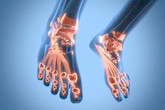What You Should Know About Knee Arthroscopy
Knee arthroscopy is a procedure where the doctor, usually an orthopedist, visually examines the knee with an arthroscope, which is a fiber optic instrument with a lighted tip. The images of the joint will be projected on a video screen. Knee arthroscopy is one of the most common joint surgeries performed.
It's done when the doctor suspects that there's a disease or an injury in the knee that needs to be diagnosed. If the doctor finds something wrong with the knee during the arthroscopy, it’s possible that the problem can be fixed at the same time.
Before the Surgery
The patient should make ready lists of all the doctors they’ve seen, their medications, their past medical history and their insurance coverage, including Medicare. They should have their insurance cards available at the time they check into the hospital. Some time before the surgery the patient will also have interviews with the orthopedic surgeon as well as the anesthesiologist.
Before the arthroscopic knee surgery the patient will have blood and urine tests taken and the knee will be X-rayed. The doctor will ask them to stop taking certain meds or supplements that thin the blood and prevent healing clots from forming. The doctor may require the patient to fast, depending on the kind of anesthesia they’ll have and they should not have any alcoholic beverage 48 hours before the operation. The patient should also bring or wear loose clothes and not wear make-up.
The patient should arrange to be driven home because, despite what sort of anesthesia they’ll be having, they’ll probably be groggy and uncomfortable afterwards and simply physically not able to operate a car. Ideally, someone should stay with the patient for the first couple of days, or check in on them every day for a few days. The patient should have already contacted a home care agency or a rehabilitation center if they feel the need for their services.
Before the surgery begins, the patient will take off their street clothes and their jewelry and put on a hospital johnny. They will then be given a sedative via I.V., then given some kind of anesthesia. This can be a local anesthesia injected into the surgical site, a spinal or regional anesthesia, or general anesthesia. The first two types of anesthesia allow the patient to be awake and probably even follow the surgery on the video monitor, but during general anesthesia the patient won’t be awake.
During the Surgery
Before the operation the knee will be filled with saline solution to make the joint larger and give the orthopedist more room to work. During the operation, an incision is made at the knee and the arthroscope inserted into the joint The surgeon then inspects the joint, via the image projected on the video screen. The orthopedist, if they find something wrong, can then perform whatever surgical procedure needs to be done. The patient can have tears in the meniscus, the cushioning cartilage between the bones of the knee. This might require microfracture surgery, where the surgeon makes tiny holes in the bone to stimulate it into making new cartilage. Arthroscopy can also reveal damaged anterior or posterior cruciate ligaments, inflamed joint linings, a misaligned kneecap, broken cartilage, or a Baker’s cyst, a fluid filled cyst behind the knee. The surgeon might even perform a knee arthroplasty, where diseased bone is removed and replaced by a prosthetic. All of these procedures may require more small incisions made in and around the joint.
The arthroscope is then removed and the skin closed with clips of sutures, which can be taken out after seven to 10 days.
After the Surgery
Depending on what the surgeon finds during the initial examination, an arthroscopy can be an outpatient procedure or the patient can stay in the hospital overnight. Recovery from the surgery takes about six weeks.
After the surgery, a hard ridge will form along the incision, then recede as the incision heals. The R.I.C.E. regimen will apply. This means rest, ice, compress and elevate the joint.
The patient can bathe and shower as usual and use a warm compress to relieve the pain from the incision. The doctor will also prescribe pain medications and the patient should only take them when they need to. The doctor will also prescribe antibiotics. Minor pain can be handled with over-the-counter pain medications like ibuprofen.
The patient should also move their legs while in bed to lessen the chances of a deep vein blood clot, which can be dangerous. The doctor might also prescribe physical therapy, including the use of a continuous passive motion machine. The patient might begin to use this machine even in the recovery room. Exercises might have to continue for three to six months post-surgery to give the patient the best chance for complete healing.
The doctor will also prescribe crutches or a cane to help the patient walk until the healing is complete.
The patient should go back to work and resume their normal activities as soon as they’re able to. This will reduce the likelihood of post operative depression and irritability. They should avoid strenuous exercise or driving until the incision is completely healed. Usually, no special diet is needed.
The doctor should be called if the patient develops pain, swelling, redness, or if the wound begins to drain or bleed. The patient must also call if they develop signs of an infection like headache, muscle aches, dizziness, fever, general malaise, or nausea or vomiting.
Household Aid
A person who undergoes an arthroscopy and whatever operations follow it might wish to hire a physical therapist. This therapist should be contacted well before the surgery, and in most states they don’t have to be referred by a doctor, though a doctor’s referral is helpful. A physical therapist can tailor a plan for the patient that will help them heal optimally. Nowadays, all physical therapists must have a graduate degree from a physical therapy program as well as a license and more of them are getting Doctor of Physical Therapy degrees. HMOs must also carry physical therapy as part of their benefits. Physical therapists can be found through the American Physical Therapy Association, at www.apta.org.
As for home care, the patient will have to do some research, again well before the surgery. Reviews of the home care service can be had through the health department of the state where the patient lives. Any home care service should be insured and licensed, as well as accredited and certified by Medicare to make sure they live up to Federal standards.
| Written by: | Michal Vilímovský (EN) |
|---|---|
| Education: | Physician |
| Published: | November 8, 2012 at 8:07 AM |
| Next scheduled update: | November 8, 2014 at 8:07 AM |
Related articles
Get more articles like this in your inbox
Sign up for our daily mail and get the best evidence based health, nutrition and beauty articles on the web.









Ache in left arm that you should not ignore
Alkaline water dangers: why you should not drink it
How to Avoid Sleepiness While Studying?
23 Foods That Increase Leptin Sensitivity
Low dopamine (e.g. dopamine deficiency): causes, symptoms, diagnosis and treatment options
Swollen taste buds: the ultimate guide to causes, symptoms and treatment
Thin endometrial lining: causes, symptoms, diagnosis and treatment
Pimples inside nose: the complete guide
Holes in tonsils: definition, symptoms, treatment and prevention
How to deal with an ingrown hair cyst
Allegra vs. Zyrtec vs. Claritin
Allergy to penicillin and alternative antibiotics
How to get rid of phlegm (excessive mucus) in throat? Detailed guide to medical and home remedies, symptoms and causes
What causes stomach ache after meals?
Liver blood test results explained